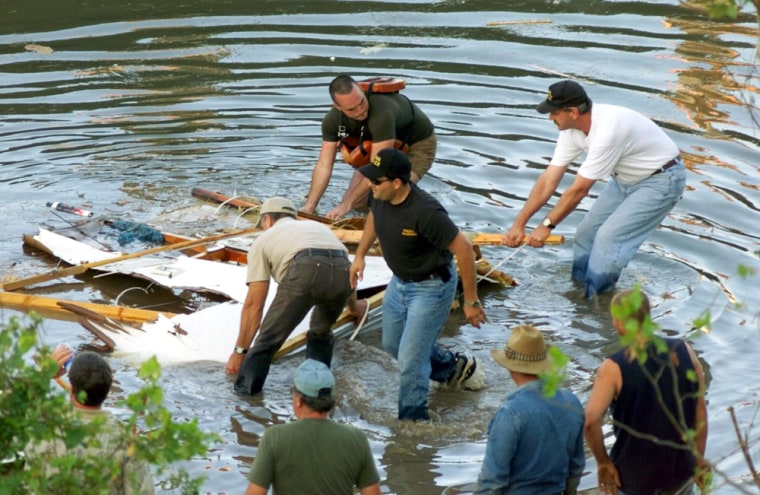Federal safety officials on Tuesday said that an alert system could have warned a towboat crew that its pilot had fainted and prevented the deadly collapse of the Interstate 40 bridge near Webbers Falls, Okla., in 2002.
The National Transportation Safety Board also said fewer people might have died had there been a warning system to alert motorists that the Arkansas River bridge had fallen. The safety board found that some of the 14 people killed in the accident could not stop before driving over the edge of the collapsed bridge.
NTSB chairman Ellen Engleman Conners said that only a handful of the nation’s 600,000 bridges have systems to warn motorists that a bridge has fallen. She compared the absence of warning systems on bridges to the abundance of alert methods on the interstate highway system.
“The importance of this accident cannot be overemphasized,” Engleman Conners said during the safety board’s hearing to determine its probable cause and to recommend ways to prevent it from happening again. “There is a gap in the warning system given to motorists.”
The Oklahoma bridge collapse is a reminder that bridges are vulnerable to both accidents and terrorist attacks.
Two men were arrested in New York last week for allegedly planning to blow up a subway station; they had also scouted the Verazzano Narrows Bridge, which connects Staten Island to Brooklyn. A man described as a high-ranking Hamas operative was arrested the previous week after police spotted his wife videotaping the Chesapeake Bay Bridge.
The board recommended that the Federal Highway Administration work to improve alert systems already in place on bridges that had been felled by boat collisions.
Board member Richard Healing pointed out that the recommendation simply restated the same one made 10 years ago to the Federal Highway Administration.
Promising system in Texas
The board reviewed a promising alert system on the Queen Isabella Causeway in Texas. That bridge collapsed in 2001, killing eight people, after a tugboat with four barges struck a support beam.
Since than, fiber optic cable with circuit breakers was stretched along the Queen Isabella Causeway and “Stop When Flashing” signs were installed at entrances to it. If the cable is severed, warning signals will flash every 500 feet before the void and an automatic call will be triggered to law enforcement agencies and the Coast Guard.
The safety board also urged the Coast Guard to evaluate wheelhouse alert systems starting to be used on vessels that ply the country’s inland waterways.
In the Oklahoma accident, the pilot of the Robert Y. Love was alone in the wheelhouse when he fainted about four minutes before the towboat rammed into one of the bridge piers. The safety board concluded he was possibly incapacitated by a heart condition that couldn’t have been detected before the accident.
Towboat alarm systems
Since then, some towboat operators have installed new alarm systems: One kind monitors rudder movements, the other detects the motion of the pilot in the wheelhouse. The systems will sound a warning when monitors indicate no movement of either.
Some of the Oklahoma bridge’s piers — but not the ones struck — were protected by huge barrels filled with dirt and gravel.
The safety board’s staff concluded that it would have been too expensive to protect all of the bridge’s piers, and far too expensive to protect every pier on every bridge in the country.
But the board recommended that the FHWA change the way it evaluates bridges for repair and reconstruction to consider the likelihood of a collision and collapse.
A Coast Guard study showed that boats hit bridges 2,692 times between 1992 and 2001. One bridge was struck 170 times, and two others were hit close to 100 times each.
